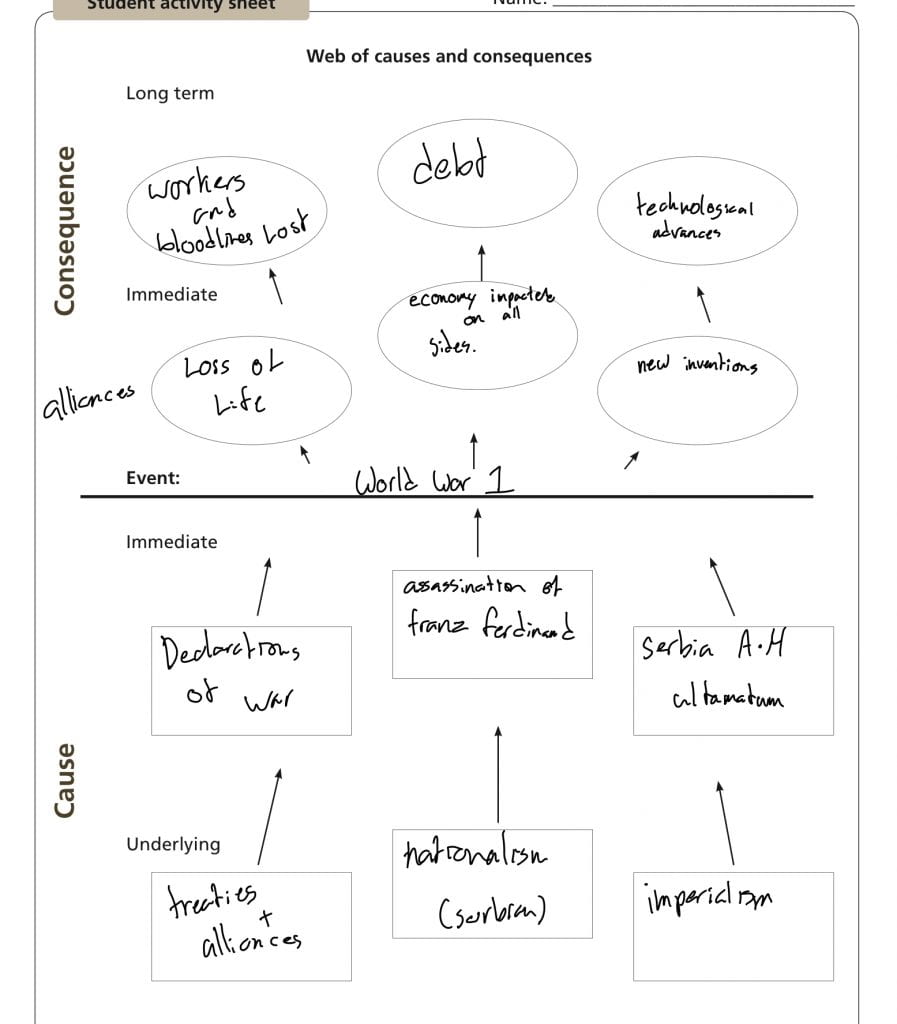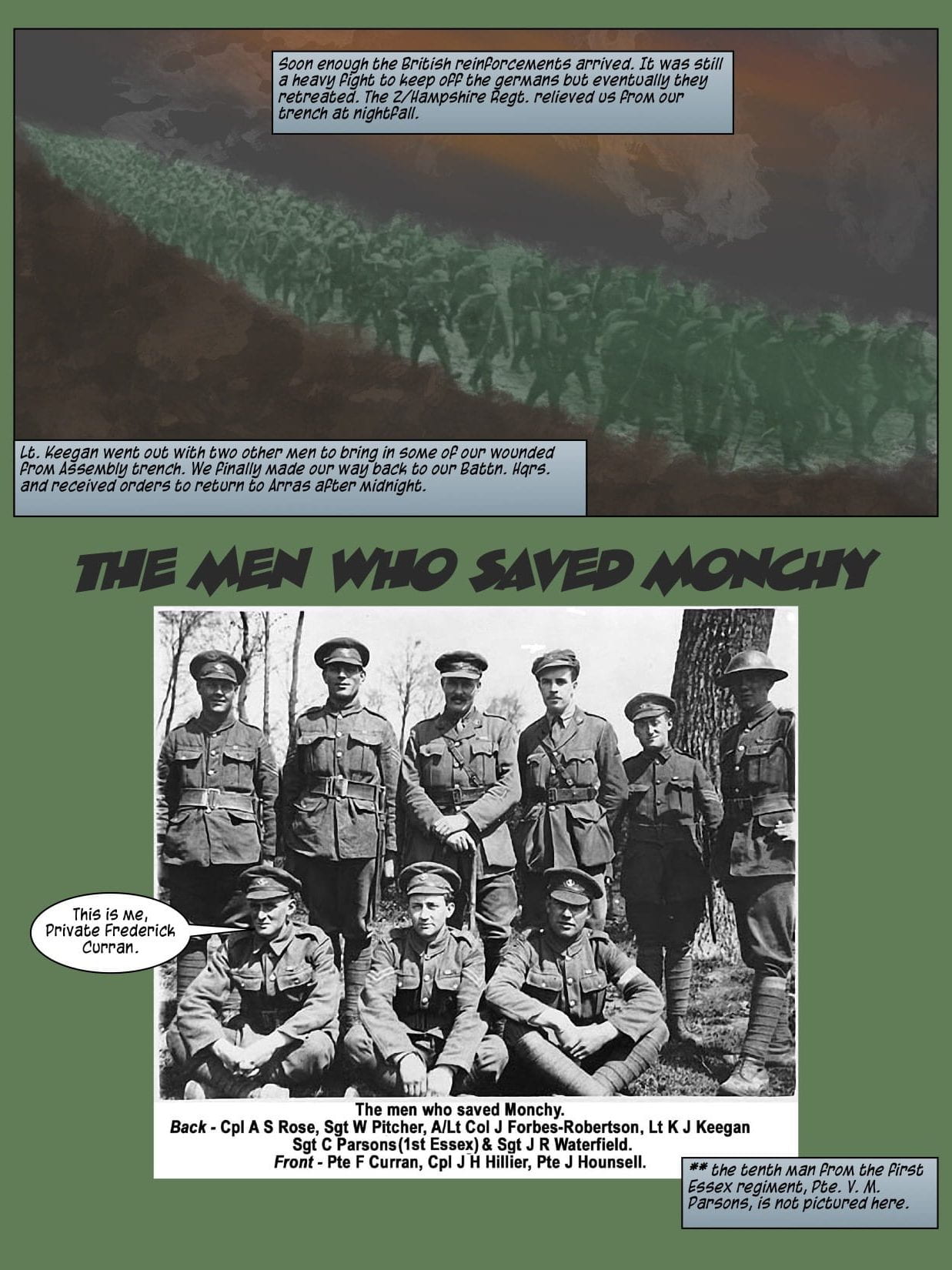Howdy all, Welcome to my blog. Today I’m going to be talking about a project called “A War To End All Wars: Graphically Told”. This project was about WWI, specifically Canada’s involvement, and the causes and consequences that came along with it.
Driving Question
“How might we use graphic novels to understand Canada’s involvement in WWI?”
You may remember that we did a comic book project last year in Scimatics called “The Body vs Bacteria”. And I still can recall almost all of the information that I put in that comic without even reading it. Now what that says to me is that I can retain information better when I draw/write it out in a fun way that is interesting to me. By choosing our own topics, it became more interesting to follow a story along and put effort into our work.
Causes and Consequences
This is not the first project that has involved causes and consequences so this was a bit of a review for me. We learned about the definitions for cause and consequence and the difference between long term and short term. We then took a look at what the inciting causes were for WWI, and what consequences followed.
Building Knowledge
Before we got into our final topics for the project, we needed to form bit of a backstory about where we are in history. We learned about a bunch of different battles and how different countries came to be involved in the war. We also read a graphic novel called World War One: 1914-1918, which was told as a first person perspective from the war. We reflected on the novel and identified more causes and consequences. We also watched the film 1917 and compared it to the graphic novel. It was my second time watching the movie and that gave me more of a chance to notice all of the little details. We also read chapters from the Nelson Text about New Instruments of War, Precipitating Factors, Canada at War and Lasting Consequences. There were various worksheets that went along with these readings where we would rank the significance of certain events, weapons, etc. We also learned about how to create a good graphic novel and some new vocabulary that we would be using.
The Graphic Novel
Finally, we got to choose our top 3 topics to write our graphic novel on. I ended up getting Monchy-Le-Preux and I was quite happy with the topic. We immediately started doing research on our topics and what we like to call the 5 Ws; Who, What, Where, When, and Why.
The finial product of this project was a short graphic novel (approximately 10-20 panels). So as a start to something that requires a story to be told, we started filling out story spines and storyboards. It was difficult to decide what to include in the story and which characters to portray. But eventually I started adding images and dialogue to my ComicLife and the story started coming together.
A lot of work went into the drawings and research so I am very proud to present to you my final comic book;
Conclusion
Overall, I think this project was super fun and i really enjoyed it. Wars are probably my favourite thing to learn about so I was super pleased to gain so much knowledge about WWI. I also gained a lot of skills on how to condense information into a story and got to work a lot more on my drawing and tracing skills. I cant wait to learn about WW2 next!
Thanks for reading.
As always, Brooke.
p.s. Here are some links that I used for information on Monchy-le-Preux;
The Rooms – Newfoundland Regt. War Diary
The Vimy Foundation – Monchy-le-Preux
Govt. of Canada – Monchy-le-Preux








